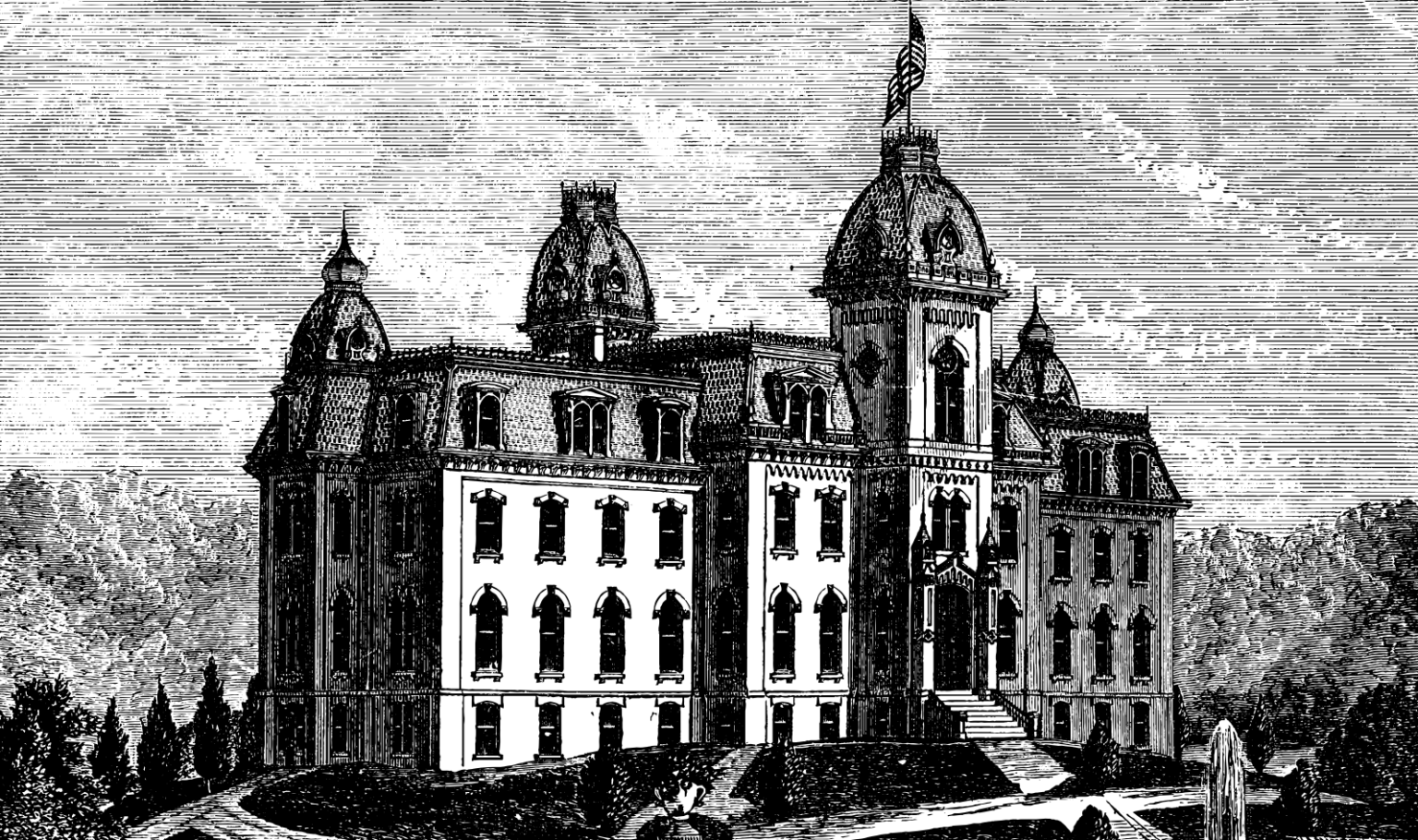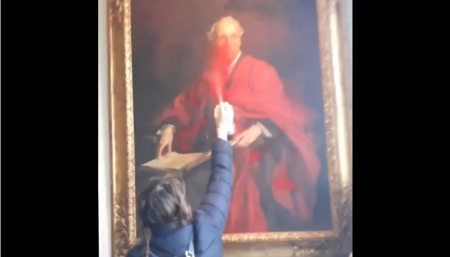There will be many more WVUs.
The West Virginia University Board of Governors will be voting in September on whether to do away with a tenth of their majors and around 169 full-time faculty positions. As the university seeks to reconcile a $45 million budget discrepancy, students and alumni continue to aim their ire at the school. For some, it’s the choice of the cuts in the proposal—most notably the shuttering of the entire department of world languages, literature, and linguistics—for others, it’s the anxiety over what cuts may come next.
But there is another phenomenon at play, one that spreads far beyond the region where WVU is a fixture, which we will be seeing often in the future. It is a surprise when we see the cracks and weaknesses appear in smaller, private colleges, but to see such a fissure mar a state’s flagship university is, to many, unthinkable. Soon it will be commonplace.
Generations of college students are used to seeing colleges and universities always growing and building. Before WWII, only a small percentage of the U.S. went to college, but that number jumped after the war and the implementation of the G.I. Bill. By 1950, higher education enrollment increased to over 2 million, only to double by 1961. By the 1980s, over 12 million students were enrolled every year, and the number continued to climb.
By the time I was visiting colleges in the 2000s, it had become a cliche of every tour to mention the number of degree programs and point out the construction on campus. “If your college isn’t building,” the student guide would parrot, “it’s dying.” Decades later, I would ask my students if they heard the same line on their college visits. Inevitably, they had.
No boom lasts forever. Enrollment peaked at 21 million in 2010 and has declined 9.6 percent since. Some of this decline can be explained by escalating costs, the degrading value of bachelor’s degree, and the growing distrust in the institutions and educators themselves. But much of it is simple math: population decline has meant a smaller pool of college-aged students. And in 2025, this problem is going to get much worse, creating a trend insiders are calling “the Enrollment Cliff.”
The unhappiness expressed by the protestors at WVU who walked out last week stems in large part from an expectation of inevitable growth and expansion, the cheap signal of your university “winning.” But if winning looks like taking on debt in the face of the Enrollment Cliff, then I’m not sure you are playing the right game. The question that obviously should be asked (but is instead ignored) is whether the WVU administration is handling the budget shortfall wisely. But why ask this question—or any question—when the game of university prestige looks like any other sporting event: You’re either a winner or a loser.
Universities are supposed to be where the best and brightest are trained by the best and brightest, so we often assume that they will take care of their own business with the utmost competency. But recently I’ve found that many share my skepticism of that assumption. After all, why was it that when the college student population boomed, so did the cost of tuition? The proverbial logic suggests that increase in the customer base correlates to a lower price point, not a higher one? But when your neighborhood college went from a local boutique to Walmart.edu, you somehow found the cost had jumped.
College attendance spiked throughout the aughts, climbing from 15.3 million to over 21 million at its peak in 2010. The increase in tuition and fees during that time was 76 percent. But even after attendance peaked in 2010, prices continued to rise. Four-year schools saw their total cost of attendance increase a staggering 39.9 percent between academic years 2009-10 and 2019-20. A new economic reality settled over higher education: Enrollments, like interest rates, may go up and down, but tuition will always increase.
I think back to the incessant construction my students see on their college campuses. How many of those projects are paid for in cash? And how many of them are budgeted to anticipate a decline in enrollment? I have very little confidence that when the bills come due we will be impressed by the wisdom and foresight of the ivory tower.
The colleges that will survive and strengthen once we hit the Cliff will be the ones who know how to play the game the right way; the game is not “growing,” it’s educating. I grew up when the number of majors, departments, students, and eventually cafeterias and student centers, were an indication of quality. But this was to make the simple human error of mistaking quality for quantity, and it ends up that your education is like a spouse—you only need one good one.
A new era for higher education is upon us, and we need to expect wisdom for our schools, not the cheap trophies that signaled winning to past generations. It’s time to rediscover education before the boom—before SEC football games and sorority Instagrams. What makes an education good is always something personal—a teacher, a class, a book, even a friend. You don’t need a large school to be part of something great; you need to learn something worth learning with people who know what it’s worth.
Sadly, it is these personal qualities that have become increasingly rare in today’s college mills. It is easy to find an activity, a program, or a fun time. It is much harder to find a caring and wise teacher who has the time and interest to help form their students. The salad days of the boom brought about auditorium sized classes, online modules, and an embarrassing number of underpaid adjunct professors. Colleges have been growing, but they are not improving, as many of us can attest.
As the events at WVU herald a reckoning in higher education, we will do well not just to brace ourselves for more bad news but to review our standards of success. As unexciting as it may sound, shifting our focus (and our money) away from new buildings, programs, and athletics and back to the classroom is the only way to secure the value of our colleges. Students and parents need to demand that their tuition dollars show up in the classroom.
Most importantly, we need to return to an old assumption: That an undergraduate degree was a chance for a young person to learn some important things worth learning for their own sake. It is not trade school for the white collar, or the prerequisite for specialized job training. It is a place to explore and contemplate the mysteries and facts of the cosmos. Chemistry and biology teach us about the systems in which we live; engineering and mathematics show us the hard realities it takes for us to operate and build; and the humanities confront us with the joys, sorrows, and possibilities of human life.
In short, college needs to return to what it once was: A glimpse of the world as a whole. There are better ways and worse ways to try to gain that view, but we would be improved just to have that as our aim. An undergraduate education should, in some form or another, offer this view to its students, and students who are not genuinely excited by the possibility of learning in their classes should not invest their time and money.
This goal, stated so simply, draws fire from those who feel it is naive, impractical, or inconsiderate to those trying to navigate difficult life circumstances with the advantage of a college degree. But the disagreement is not in the problem, but in the solution. It is difficult to explain how today’s lecture hall PowerPoints are more practical and valuable than what I suggest. It is hard to see how the lavish student union buildings and sporting events are more considerate to the hard-working and underprivileged. As for the price tag that goes along with the privilege, well, certain words come to mind, but “practical” isn’t one of them.
The suggestion here is a broad one—returning to education before the boom—and it is only the beginning of what must be a more elaborate proposal, one of many that we educators are laboring to bring into being. Some of these proposals will be brilliant and exciting, in the midst of this crisis, and many of them will be shown to be ineffective and misguided. But one thing becomes evident with growing clarity: the status quo will not do.
Read the full article here














